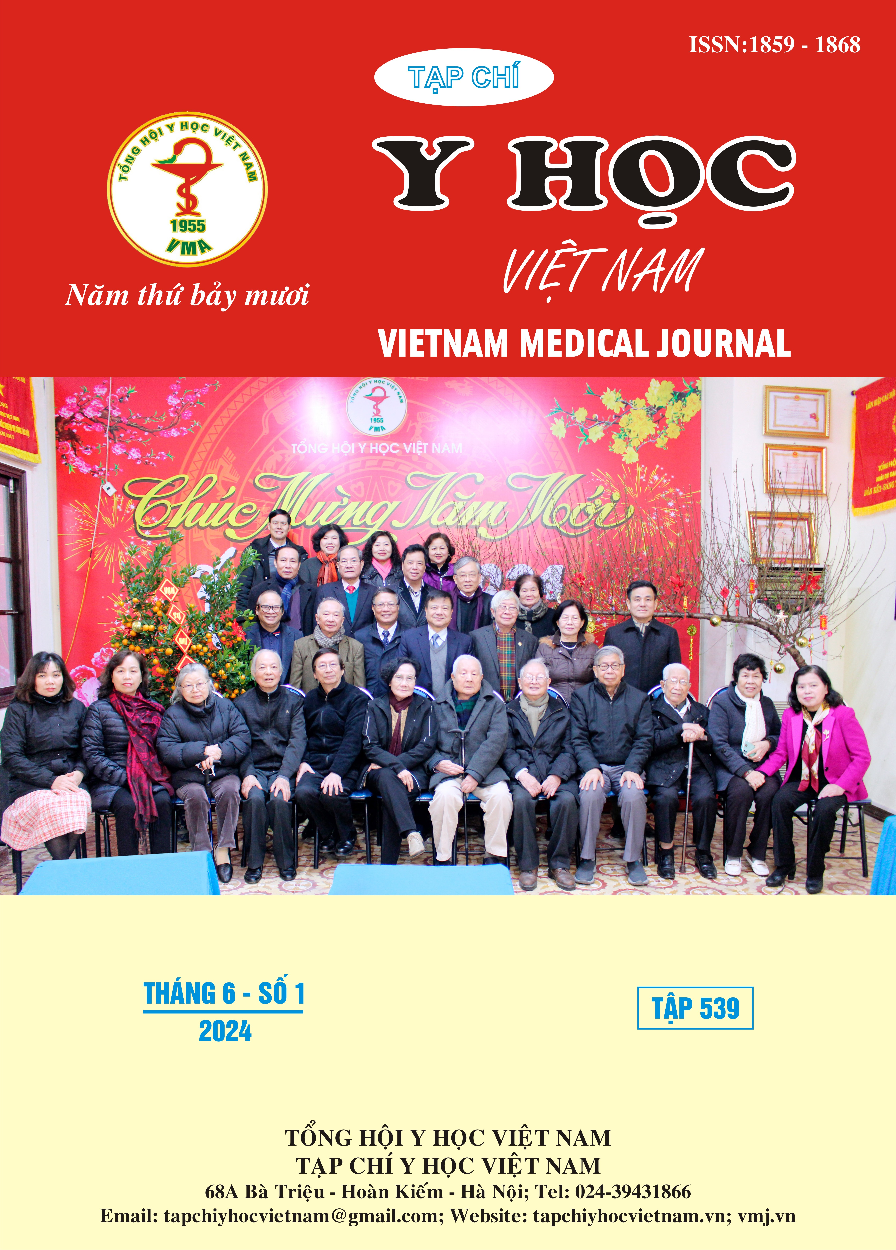COMPARISON OF EFFICACY AND SAFETY BETWEEN CONTINUING SPHINCTEROTOMY AND PRECUT SPHINCTEROTOMY IN DIFFICULT BILIARY ACCESS DURING ENDOSCOPIC RETROGRADE CHOLANGIOPANCREATOGRAPHY
Main Article Content
Abstract
Objective: Approximately 15-30% of endoscopic retrograde cholangiopancreatography (ERCP) cases define difficult biliary cannulation. In such cases, the decision to continue with conventional sphincterotomy or switch to precut papillotomy remains controversial. Our study aims to compare the efficacy and safety of these two approaches. Materials and Methods: This retrospective study analyzed 229 patients with difficult biliary access during ERCP for choledocholithiasis, divided into two groups: Group A, who continued with conventional sphincterotomy, and Group B, who underwent precut papillotomy based on the surgeon's decision. The study was conducted from January 2021 to January 2023 at Hospital 108. Results: The success rate of the ERCP technique and the outcomes of stone treatment were comparable between Groups A and B (89% vs. 90.9% and 77.9% vs. 75% for the success rate of cannulation and complete stone removal, respectively). However, Group B exhibited a lower complication rate, particularly acute pancreatitis (4.5% vs. 17.2%, P=0.01), attributed to the lower rates of pancreatic duct injection, retained guidewire in the pancreas, and contrast injection into the pancreas. Additionally, Group B had a shorter recovery time (3.5 days vs. 4.8 days, P=0.03), shorter hospital stay (7.3 days vs. 8.7 days, P=0.07), and a lower readmission rate (24.2% vs. 39.3%) compared to Group A. Conclusion: In cases of difficult biliary cannulation during ERCP, consideration should be given to switching to precut papilloma when performed by a skilled surgeon.
Article Details
Keywords
Thông nhú khó, Tiếp tục thông nhú, Cắt trước cơ vòng Oddi
References
2. Freeman, M.L.,N.M. Guda, ERCP cannulation: a review of reported techniques. Gastrointest Endosc, 2005. 61(1): p. 112-25.
3. Horiuchi, A., et al., Effect of precut sphincterotomy on biliary cannulation based on the characteristics of the major duodenal papilla. Clin Gastroenterol Hepatol, 2007. 5(9): p. 1113-8.
4. Maharshi, S.,S.S. Sharma, Early precut versus primary precut sphincterotomy to reduce post-ERCP pancreatitis: randomized controlled trial (with videos). Gastrointest Endosc, 2021. 93(3): p. 586-593.
5. Mariani, A., et al., Early precut sphincterotomy for difficult biliary access to reduce post-ERCP pancreatitis: a randomized trial. Endoscopy, 2016. 48(6): p. 530-5.
6. Miura, F., et al., Tokyo Guidelines 2018: initial management of acute biliary infection and flowchart for acute cholangitis. J Hepatobiliary Pancreat Sci, 2018. 25(1): p. 31-40.
7. Talukdar, R., Complications of ERCP. Best Practice & Research Clinical Gastroenterology, 2016. 30(5): p. 793-805.
8. Testoni, P.A., et al., Papillary cannulation and sphincterotomy techniques at ERCP: European Society of Gastrointestinal Endoscopy (ESGE) Clinical Guideline. Endoscopy, 2016. 48(7): p. 657-83.


